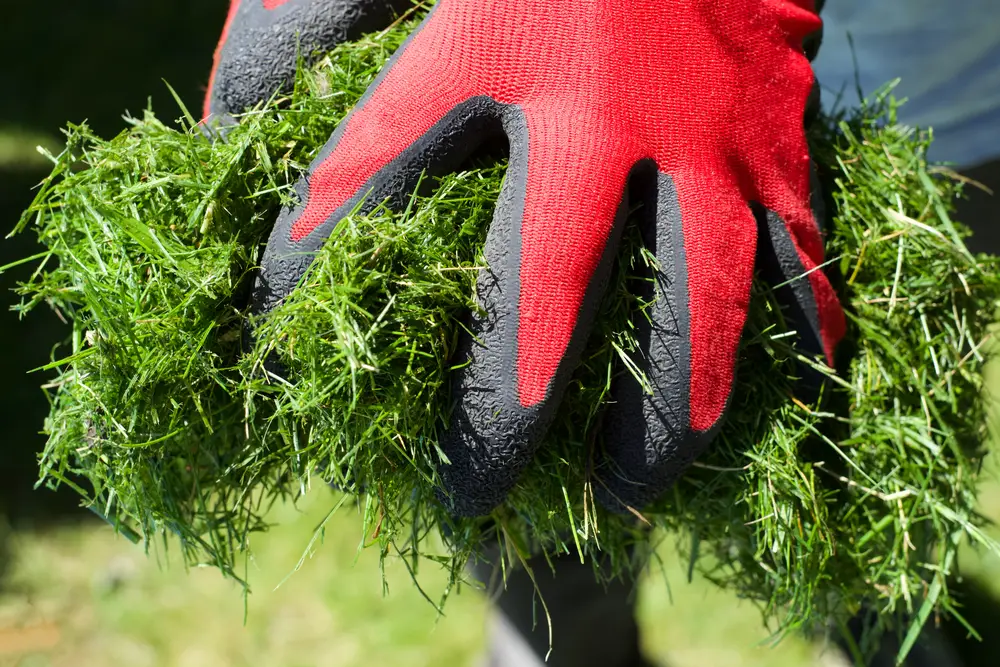Grass clippings, as you may know, are leftover grass from mowing your lawn. You may also wonder what to do with them and whether or not they’re helpful. So, here’s how you can use grass clippings to help your garden.
Using grass clippings as mulch, top dressing, base fill, or liquid fertilizer helps your garden by:
- Providing plant nutrients such as nitrogen
- Lessening the need for man-made fertilizers
- Increasing organic matter in your garden
- Reducing weeds
- Preserving moisture
- And moderating soil temperatures
In this content you’ll learn:
What Are Grass Clippings?
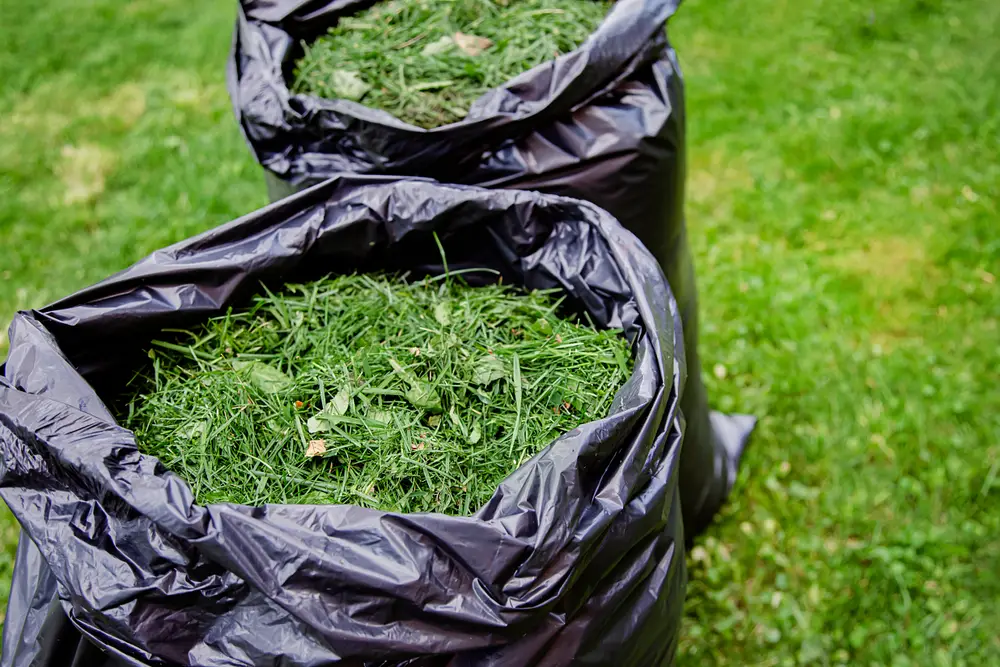
Grass clippings are the grasses left behind on your lawn when you mow. The attached grass bag or catcher can also catch them on some lawn mower types.
Grass clippings are typically short if you mow your lawn using the standard one-third rule. This is when you cut one-third off the preferred height of your grass. Usually, you do this consistently to keep your lawn healthy.
Your consistent mowing will also provide a constant supply of beautiful grass clippings that benefit your garden. But we need to dive into how grass clippings tie into plant nutrients before discussing those benefits.
An Explanation Of Plant Nutrients
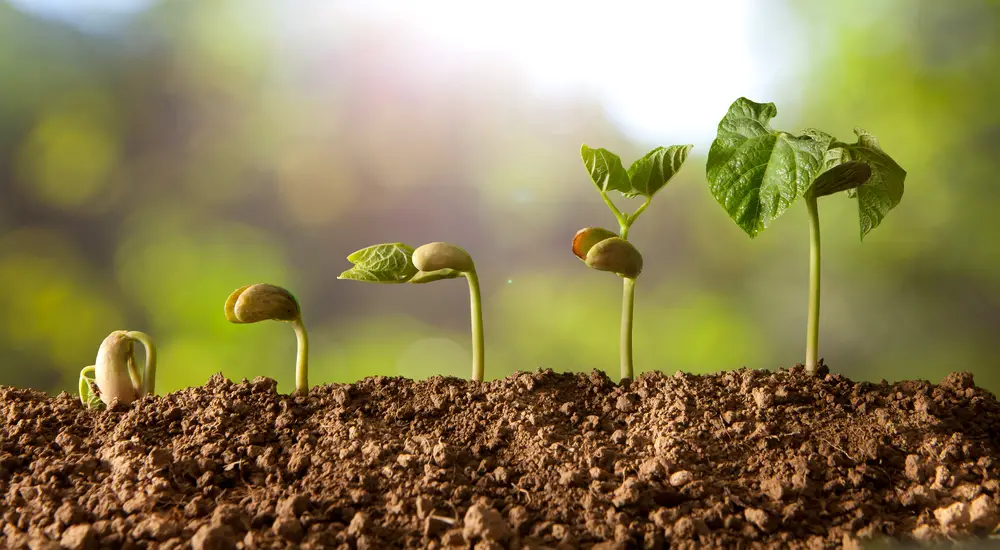
Good soil provides plants with essential nutrients. We abbreviate these nutrients as NPK, which stands for nitrogen (N), phosphorus (P), and potassium (K – coming from its periodic table letter like the others). Among those three, nitrogen is the most important.
Nitrogen promotes strong growth, reproduction, development, and photosynthesis in every plant. Plants that produce fruit or vegetables tend to require more nitrogen-dense soil, as more is required of the plant to produce said fruit. There is some amount of nitrogen in most of the fertilizers we use.
However, nitrogen imbalances can cause severe issues for plants.
For example, a nitrogen deficiency can lead to stunted growth and lowered quality of both fruits and leaves. As another example, oversaturation of nitrogen can cause the surrounding plants to not even produce flowers or fruit! You may also see chemical burns develop on the plants’ leaves, causing these plants to wither and die.
How Grass Clippings And Plant Nutrients Are Connected
As they decompose, grass clippings naturally give off the necessary nitrogen for plant life to grow! So, provided that you don’t use pesticides or chemicals on your lawn, you can use grass clippings as a source of plant nutrients without oversaturating them!
How Grass Clippings Help Your Garden
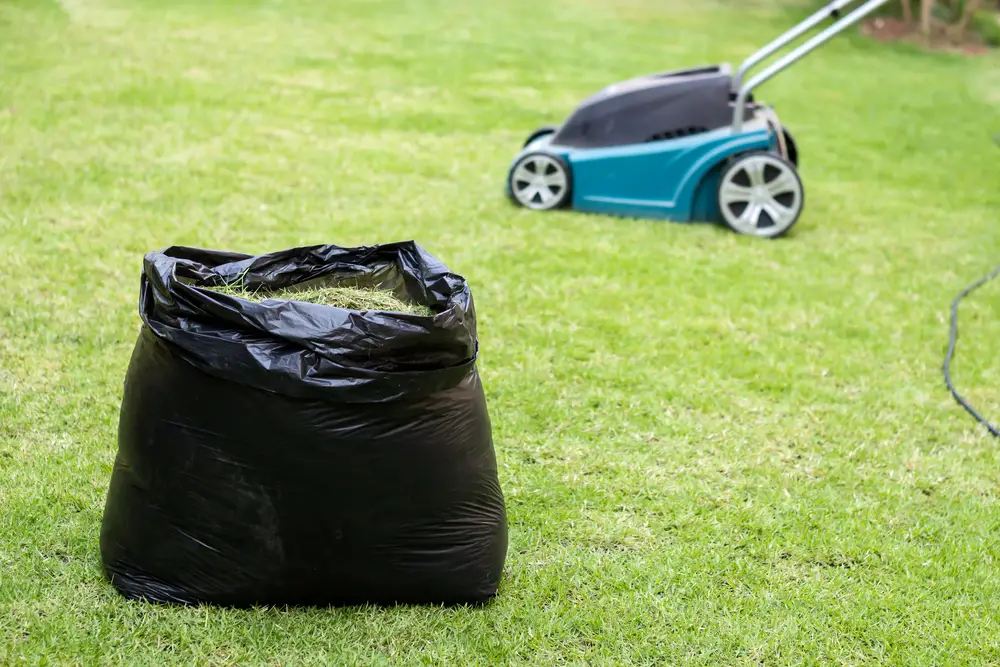
Grass clippings help your garden in many ways. These include the aforementioned nutrient benefits, but they include other reasons too.
Here’s what they are.
A Natural Source Of Nutrients
You are encouraging proper plant nutrition by recycling your grass clippings back into the earth! When you mix these grass clippings back into the soil, you want to ensure you do so at around a 20-centimeter (7.87-inch) depth to properly spread the nitrogen into the root system of your garden.
Less Need For Man-Made Fertilizers
Using a naturally occurring resource such as grass clippings can decrease the amount of unnaturally made substances in the soil. This creates a healthier environment for our plants, insects, animals, and us too.
More Organic Matter
By adding grass clippings to your garden’s soil, you will increase the amount of organic matter within the soil composition, especially in overly sandy or clay-dense areas. Adding more organic matter in these areas promotes proper water absorption into the soil and the surrounding plant life.
Fewer Weeds
Adding a top dressing (a thin “top layer”) of recycled grass clippings to your garden will prevent any weed seeds blown into the garden from taking root in the soil. A top dressing of clippings that is about 3 inches deep will help to stop weed growth from occurring. This is because the grass clipping layer will deprive the possible weeds of sunlight.
Preserved Moisture
When used as a top dressing for a garden bed, the grass clippings will help both the plants and the root systems below conserve moisture. Below the laid-out grass clippings, the soil is out of direct sunlight, slowing down any water’s evaporation process and forcing the soil to retain moisture! Therefore your garden requires less watering by you, making the daily chore a lot simpler!
Moderated Soil Temperatures
Once again, using grass clippings as a top dressing in your garden beds keeps the soil below out of direct sunlight. This process not only conserves moisture but also keeps the soil shaded. This keeps said soil at a more moderate temperature that is easier to bear for plant life, especially on scorching summer days!
Will Not Cause Unwanted Grass Growth
Contrary to popular belief, as long as no grass seed is included in the mix, adding grass clippings to your garden WILL NOT cause grass to root or grow in unwanted areas such as your garden!
Best Ways To Use Grass Clippings In Your Garden
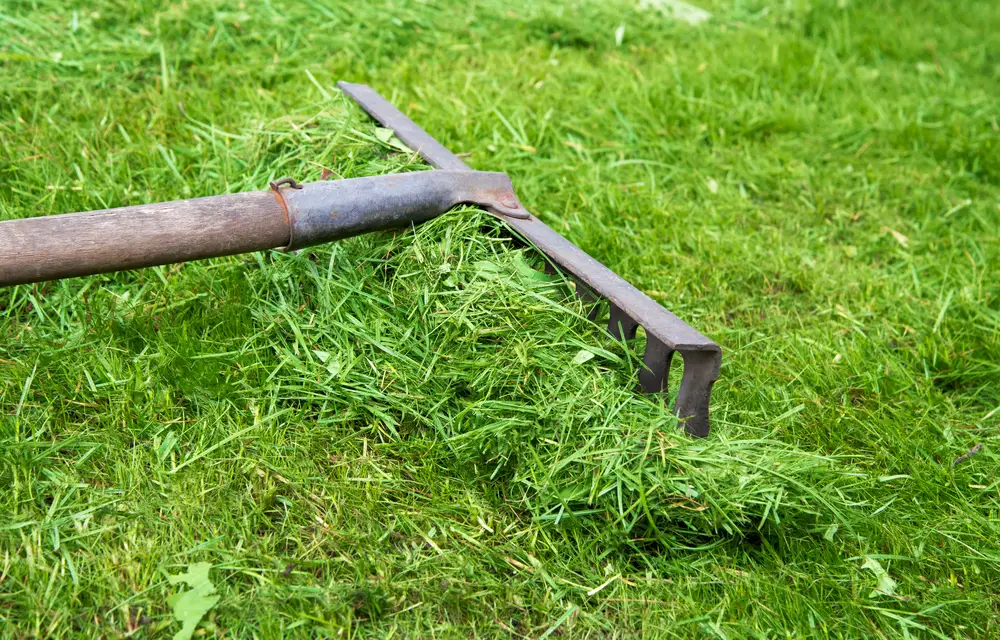
Now that we’ve discussed how grass clippings help your garden, we can discuss how to use them to achieve those benefits. There are several ways to do this, but before we get to them, we need to talk about the importance of drying out your grass clippings.
A Quick Note About Why You Should Dry Out Your Grass Clippings
Some of the below grass clipping uses require drying them out. Drying them out is essential even though they lose color and look rough, as this prevents them from matting.
Matting is when wet grass clippings sit in a thick layer and fuse together to create solid masses. These groupings prevent proper amounts of oxygen and water from flowing into the soil, which prevents them from reaching plants’ roots.
To prevent matting, use that 24-hour rule for drying out the clippings.
However, you may not be a fan of dried grass clippings. In that case, for example, you can safely apply a very thin layer or a sprinkling of fresh grass clippings as topsoil.
Organic Mulch
After letting your grass clippings dry out in the sun for 24 hours, you can use them as a cheap and effective mulch option. Grass clippings make an excellent choice for mulch, as they are lightweight and decompose easily into the soil. This means plants will more easily get their needed nutrients. At the same time, the mulched grass clippings help control weeds and soil temperature and moisture.
It’s a win all around!
Top Dressing
Also referred to as a thin “top layer,” you can use a top dressing on or in any garden bed as a layer on top of the soil to deter weeds, retain moisture, and assist in managing soil temperatures on hot summer days. When doing this, make sure the grass clippings are dry. You can do this by leaving them in the sun for 24 hours! Using grass clippings may not be everyone’s favorite look as a top dressing. However, it remains an effective way to suppress weed growth.
Base Fill
It can be costly to fill raised garden beds with topsoil. This is due to several reasons.
The first is that raised garden beds are raised off the ground, requiring more soil to fill them.
The second is that topsoil is more expensive since it’s processed to remove debris and allow roots to grow freely.
But you can cut costs and increase soil nutrient density with fresh grass clippings combined with any other compost as your base-fill or “bottom layer.” This provides a convenient nutrient source for your raised bed garden and will continue to provide valuable elements to the soil as it decomposes over time!
Liquid Fertilizer
You can also make grass clippings into a natural liquid fertilizer, and it’s straightforward to make at home. All you need is grass clippings and some water!
Use your average-sized bucket (typically five gallons) to make enough to spread throughout your garden. Fill the bucket with two-thirds grass clippings, then fill it with as much water as possible. Let this mixture sit in the open air for 3-4 days, stirring at least once a day.
Following this process allows grass clippings to leak their macronutrients (nutrients plants require in more significant amounts to provide energy) into the water and ferment.
Fermentation occurs when organic matter breaks down chemically with the help of bacteria, naturally occurring yeast, and some warmth (which the sun can provide in this case). Fermentation helps increase the amount of good bacteria. When you feed this fermented mix to your plants, these “good bacteria” help the plants to grow both stronger and faster!
After 3-4 days, strain the grass clippings and throw them in the compost! This liquid will act as a very mild fertilizer and will not overdose your plants with nitrogen or burn them in the process. Feel free to dispense about ½ to 1 cup of liquid on each plant. You can even use a watering can to store the fertilizer, making it easy to dispense next time!
(Bonus) Composting
Although composting is not part of a garden per se, it is connected and is a great addition to learn about. Plus, you can use the composted mixture within your garden to improve the garden’s vitality!
To make compost, combine a mixture of natural ingredients, including plants, food waste, and other organic materials, including fallen leaves and manure. Let these organic elements come together in a large container or “compost bin” and allow them to decompose over time. The resulting mixture will contain large amounts of nutrients you can feed back into your garden as a plant fertilizer to improve the soil’s nutritional composition for the surrounding plants.
Three Major Mistakes To Avoid With Using Grass Clippings
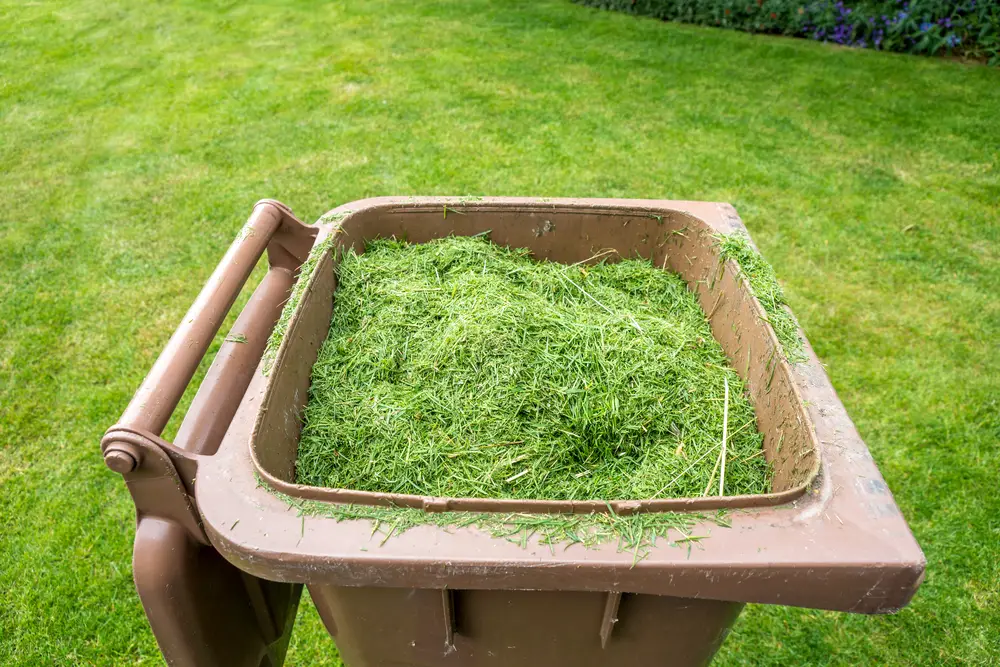
There are many ways to use your recycled grass clippings, but we also want to be sure to use them correctly and healthily as we transfer them over to our gardens. We want to ensure we keep our gardens healthy and do not transfer any unwanted elements into them, their soil, or their environment. The following subsections provide an outline of the top 3 ways in which to avoid using your grass clippings.
Using Damp Or Wet Clippings
By not letting your clippings dry out before using them for tasks such as mulching and top dressing, you risk causing matting to occur. Matting is when the clippings dry in solid, nearly impenetrable sheets. These sheets will prevent proper oxygen and water flow down the root systems of your garden.
Using Treated Grass Clippings
If you tend to treat your lawn with any herbicides or pesticides, using those grass clippings for any garden work can cause the death of your plants! To avoid this, use minimum grass clippings from a lawn that has not been treated in the last two months.
Or Using Weedy Grass Clippings
If your lawn has many weeds, do not use these clippings in your garden. Using this mix can introduce weeds into your garden!
Final Thoughts
One of the best parts about using grass clippings is their ease and cost-effectiveness. So, if you’re looking for such an option, give them a try!
Now I want to know what you think! Did anything surprise you about what you read today? Do you have anything to add? Feel free to let us know in the comments below!
